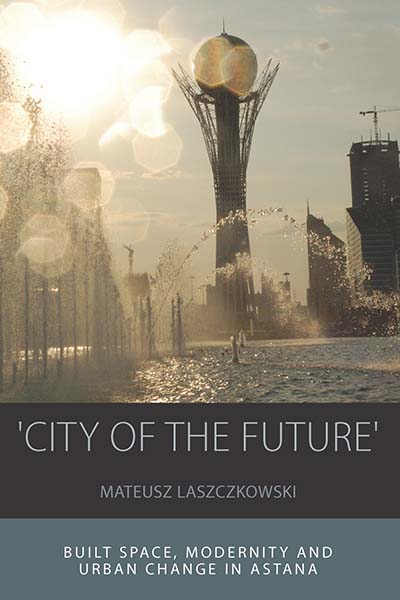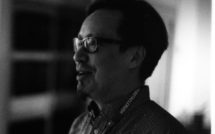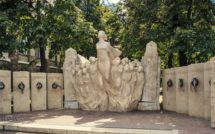
“City of the Future”: Built Space, Modernity, and Urban Change in Astana by Mateusz Laszczkowski

This is part of our special feature, Contemporary Urban Research in the European City.
This book truly epitomizes twenty-first century scholarship in the social sciences. From this standpoint, despite its primary focus on a Central Asian society, it can be considered a useful reference for Europeanists in the broader sense, especially those involved in post-communist studies. As a matter of fact, the book was written in English by a Polish researcher, in a German institution, with European funding, drawing on extensive fieldwork in Kazakhstan.
Laszczkowski’s monograph is based on a doctoral dissertation defended in 2012. In many ways, it is exemplary. First, any early career researcher must salute the successful academic achievement which consists in valorizing a PhD thesis in four years of time. Second, formally speaking, the volume is of reasonable length, which also stands as a real challenge. Third, the author offers an extremely rich balance of theoretical arguments and empirical contributions, supported by a poetic prose. This, of course, generates admiration, considering that in the global academia, we all need to master the lingua franca. Mateusz Laszczkowski’s book reads not only as an academic work, but also as the captivating narration of how people react when their lives and environment are subject to deep change. Through the observation of how people and places evolve in Astana, the author revisits social divides: between the too often opposed groups of power elite and ordinary rural citizens, there are plural strata which compose Kazakhstani urban population (above 53 percent in 2015, according to the CIA world Fact Book). Such a conclusion may easily be tested, discussed or amended in other European societies.
This book opens stimulating debates in many fields, according to the classical division of academic labor: urban studies, post-communism, Central Asian studies etc. This is mainly one of the reasons why I argue that it can help orienting Europeanist doing research in the two former fields. Truth is, even if the author legitimately claims belonging to the tribe of anthropologist, especially thanks to his virtuosic ethnography, I am convinced he is above all a social scientist. Hence, the book can be used as the perfect companion to post-graduate studies in many fields, because its methodology is brilliant, clear, transparent, and utterly reflexive. No doubt, it will be added as a major reference in many syllabi to come.
The reader is caught in the midst of fascinating stories and compelling arguments. The structure allows us to grasp multiple times, plural spaces, thus numerous modernities. Chapter 1 explores the discrepancies among the visual and the practical sides of Astana. As in the whole book, Laszczkowski follows people and gives the reader a chance to walk the city. Chapter 2 enlightens the urban/rural entanglement, thanks to the narration of five individual lives that are deeply connected to the city. It is an excellent manner to overpass the popular debate, framed in pejorative terms, between mankurt (russified Kazakhs who presumably lost their roots) and mambet (allegedly backward kazakhophone countrymen, equivalent to “rednecks”). Chapter 3 engages with intimate experiences and remainings of Soviet urbanism, as seen by the inhabitants of Tselinograd, the city that stood there before the place became the state capital. Chapter 4 describes how people belong to different groups, together or against one another, on the occasion of public spectacles organized in city squares. Laszczkowski here revisits social divides in a very original way. Chapter 5 is a brilliant demonstration of how dvor (the courtyard) is central to the fluctuating border between public and private conceptions of place-making. Disorderly material change, involving a constellation of actors, is blatantly demonstrated here. Finally, chapter 5 illustrates both the Latin phrase in cauda venenum and the English “last but not least”: the author explains how playing a game, which requires a personal engagement with the city, can serve as the perfect participant observation. Here, venenum is not the negative poison, but the positive remedy (the Greek pharmakon). Anyone, be they Europeanists or other specialists, envisaging the use of ethnographic methods and wondering how to make sense of it, should study this piece.
Moreover, this book is timely for at least three reasons. Primo, the international exhibition Expo Astana 2017 about “Future Energy” (sic) has just opened on June 10. This volume is the ultimate vademecum for all visitors and observers.
Secundo, among several doctoral dissertations, written in western universities (two in the US and two in Europe), which examined Astana as both an object of enquiry and a research field, in various disciplines (geography, anthropology, political science), Mateusz Laszczkowski is the first to issue a monograph. As stated in the “acknowledgments,” together with the author, Alima Bissenova, Natalie Koch and I form a joyful quatuor of “Astanalogists.” We did our PhDs practically at the same time (circa 2007 – 2013).
Tertio, this monograph is timely because social sciences, after having experienced several “turns” (reflexive, spatial, multi-disciplinary, post-colonial, post-human, digital etc.), might be undergoing a new one which is perfectly illustrated here. Laszczkowski’s book advocates, if I may, for a “material-constructivist” turn, intended to cope with messiness – let’s even say chaos. On the epistemological level, in my view, it seeks a convincing and stimulating balance between, on the one hand, the constructivist phenomenology established by Berger & Luckmann (the realm of ideas), and on the other hand, the pragmatist stance put forward by Searle or Hacking (the realm of concrete things).
To that aim, it underscores the heuristic salience of polymorphic urban change. By doing so, Laszczkowski transcends numerous binaries which pertain to twentieth (even nineteenth) century scholarship: time and space, the individual and the collective, local and global scales, microscopic or macroscopic phenomena, discourse and practice, ordinary and exceptional features, rational and sensitive approaches etc. As a virtuosic ethnographer and an ingenious social scientist, he traces constantly evolving and competing aspirations, creative behavior, and unexpected consequences. In other words, this book argues in favor of a very subtle conception of space, which is all about the entanglement of the self, the social and the material. Laszczkowski’s book demonstrates the political salience of incertitude, proliferation, coincidence and improvisation. In order to reach that end, he offers the reader a meticulous account of personal lives, public celebrations, initiatives in a courtyard and original game playing.
Finally, from a political science standpoint, this book contributes to revisit a major question, about the ways in which power must be comprehended. Should it be framed as a relational concept (domination/resistance patterns), a physical notion (energy-capacity) or a cosmic process (everlasting interaction between order and chaos)? Europeanist largo sensu might be quite sensitive to that issue.
Reviewed by Adrien Fauve, Sciences Po – CERI
“City of the Future”: Built Space, Modernity, and Urban Change in Astana
by Mateusz Laszczkowski
Publisher: Berghahn
Hardcover / 220 pages / 2017
ISBN: 978-1-78533-256-2
To read more book reviews, please click here.
Published on May 1, 2018.




